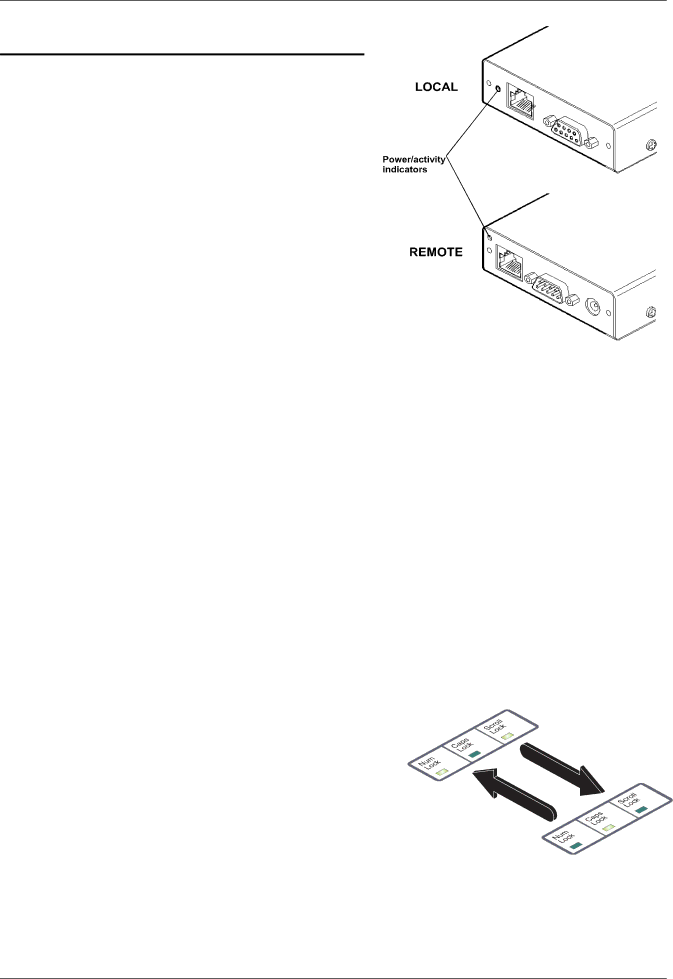
English Manual
4. Operation
4.1 Power and activity indicators
On the front panel of both modules are small recessed indicators which provide confirmation of power and activity, as follows:
•Constant red – power applied no communication activity.
• Flickering red - power applied, mouse or keyboard activity occurring.
•Slow flashing red – module is in flash upgrade mode.
Note: Both modules contain internal automatic
General Use
In use, the Extender C5 modules should be transparent - the system and its peripherals should operate exactly as normal, the only difference being that they are now up to 300 metres apart.
In some installations, you may see some ‘shadows’ to the right of high contrast screen characters. This can be caused by an incorrectly selected sharpness setting and it may be necessary to make adjustments to correct this. Please see ‘Image controls - sharpness and brightness’ in the ‘Special configuration’ section.
4.2 Locking and unlocking the system
In situations where the computer system (and the LOCAL module) can be locked away the Extender C5 set offers a viable security system to deter unauthorised use. Once a password has been set, a simple key sequence allows the system to be quickly and securely detached from its peripherals. Only the correct password will reconnect the remote and local modules.
To lock the system
1 First set a password. For further details, please refer to section 5.4 ’Password setting.’
2 Simultaneously press the currently configured hotkeys (by default, <CTRL> and <SHIFT> along with <L>.
The screen will go blank and the three keyboard indicators will begin alternately flashing between the ’Num Lock’ and ’Scroll Lock’, and ’Caps Lock’. This sequence indicates that a password is required.
LINDY KVM Extender C5 | page 15 |
